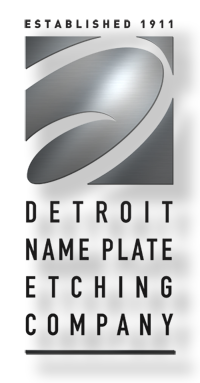Data plates aren’t one size fits all. They can be item specific for one vehicle or machine, or they can present general safety warnings about your workspace. Either way, they need to remain legible for as long as possible and present all the information you need on them.
Since data plates have to come in lots of shapes and sizes, when you’re deciding how to build your data plates, there are tons of factors to consider. Here are four main criteria you should look for when ordering your custom data plates.
Materials
Where is your data plate going to live? If it’s going to live outside, in a freezer, or in a chemical lab, the considerations for what it’s made of and how it’s etched will be different.
That’s why deciding what your data plates will be made of is critical. You need materials that will last as long as possible under the conditions where they’re going to stay. Some materials are excellent at standing up to the elements and corrosion. Those same materials might not do so well where harsh chemicals are being used, or extreme temperatures are the norm where your data plate will live.
For instance, plastic is less likely to stand up to extreme temperatures than stainless steel, but it is cheaper to manufacture and can withstand some chemical spills better than metals. Plastic is also easier to mold into unique shapes that you may need.
Process
Although processes like injectable molding are cool for logos, data plates are less about the “wow” and more about the “what.” Therefore, the process you use to watch your data plates needs to ensure the lettering remains legible for a long time, and the data plate can fit where it’s supposed to go.
Sometimes, processes like metal forming need to be utilized to ensure your data plate fits on a curved surface. If you need a large quantity of data plates for multiple piece of equipment, a quick turnaround time with unique serialization is also a must.
Information
How much information do you need on your data plate? This will determine the size text, placement of sections, paragraphs, logos, and more. What goes on a data plate often boils down to what an operator needs to know, be they a short order cook or a tractor driver.
Thanks to technology, QR codes can sometimes replace tons of information on one data plate. If you’re looking for data plates with QR codes you need etching that will stay sharp so your reader or smart phone can read them as long as possible.
Other times, information is legally mandated to be on there. The information you have to have on your data plate depends on a number of factors, including your industry, the purpose of the data plate, and whether the plate is going on a wall or a moving part like a car, tractor, or other piece of machinery.
Details
Finally, details like your company’s branding and logo placement on your data plate may have to be considered. For data plates, the legibility of the font you pick is paramount. However, a legible font can also be on brand and fit your company’s visual communication – legibility and branding, after all, aren’t always mutually exclusive.
Logo placement is also a critical consideration, as are other factors like warning boxes, laying out multiple directions, the information that has to be presented by law, and more. Therefore, the layout of your data plate is a critical part of the design process.
Need a data plate? We’re happy to help! Contact us today to get started on a custom order, bulk order, and more. Our experts are on standby to walk you through the process and collaborate on placement, materials selection, process, and everything in between!
